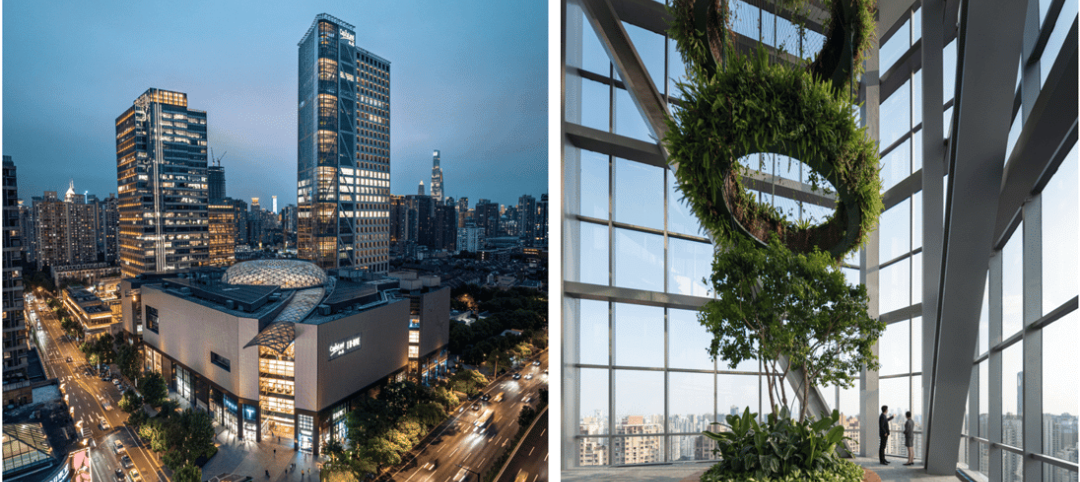BD+C: How is Duke’s capital projects program faring in this economy?
John Pearce: Compared to most, we are in good shape. On the university side of the campus, we finished most of our new building projects in 2008. We have had to slow down on building restorations, mostly to internal mechanical systems, but we continue to do feasibility studies on wish lists from the 10 schools on campus.
On the health systems side of the campus, we have two major projects: a cancer center and a major hospital expansion, about $600 million of work. A new $50 million education building for the medical school is also about to start construction.
With our master plan of 2000 in place, our trustees decided to link everything—financial projections, master planning, capital budgeting, etc.—so today it’s a much more report-based, developed approval process.
BD+C: Are students and faculty involved in capital projects?
JP: All of the board committees have students, faculty, and trustees; each committee reports to the Board of Trustees. Certain committees, including Facilities & Environment, have formal approval authority. On the design side, Duke has an internal review committee that meets every two weeks to deal with all the design issues for projects, with input from all of these groups. In the business and finance area, there are students who are very active, and we have one graduate student who is very big on sustainability.
BD+C: Speaking of sustainability, Duke has 26 LEED-registered projects, 16 of which are certified, including four Silvers, one Gold, and one Platinum. What is Duke’s policy on sustainability?
JP: In 1993, I prepared a set of design guidelines for the university, which have been updated over the years. We deal with a 50-year building, so you have to speak to the issue of quality materials and systems at every level—exterior walls, windows, roofs, mechanical systems, etc. When it came to introducing LEED to the campus, in 2002, we had a head start, and we made it immediately clear that we wanted a specific level of quality.
At first, we had to concentrate mostly on the site design requirements. We handle stormwater on a campuswide basis, and we’ve also separated our parking from our buildings, so this was a struggle for us because of how the USGBC defined the site. More recently, we’ve been concentrating on energy issues, such as the conversion from coal to natural gas and the use of central chilled distribution. These things don’t usually get us a lot of LEED points. Nevertheless, our standard is LEED Silver.
Duke has also signed the American College & University Presidents’ Climate Commitment to be carbon neutral by 2024, which happens to be the centennial of the founding of Duke University.
BD+C: Are you requiring the use of BIM on projects?
JP: We use design-build, and in some cases, those firms have suggested using BIM, but we have not required it. I think the jury is still out on BIM. My reaction is that a BIM system often makes a project design look more finished than it really is. It’s almost a gimmick. I find sometimes the project managers feel that BIM makes their job easier, but I worry that there may not be enough architecture and design requirements in the models. We’re being careful with BIM. It will probably happen, and it’s great not having ducts running through your steel beams, but I’m not sure about it as an upfront requirement.
BD+C: The $64 Question: How can design firms get work at Duke?
JP: I get calls from architects all the time, and the first thing I say is, Do your homework! Be serious. Find out about us. My website has our Action Plans, so don’t ask me what we have in the works—it’s all there (http://architect.duke.edu/planning/master_plan.html). My vendor list is 120 firms long, and we probably use 25 well-known firms.
Second, make sure the principal shows up for the interview, not just the marketing professional. I try to meet with firms, because I do enjoy learning from them, but often the marketer is pretty inexperienced. Who is the person who’s going to be dealing with the dean and the trustees? That person needs to be available. We interview in the standard way, and you can tell who knows what they’re talking about.
Also, you have to understand how the academic environment works. It’s a hydra-headed entity with many customers, all having various beliefs as to who is making the decision. It’s not the corporate world, where you might get a single decision maker.
Finally, you’d be absolutely amazed at how bad people’s references come through. References really need to be clean. You have to make sure that the person to be contacted will give the reference you desire.
All I want to know is what you can do specifically for Duke, based on your firm’s experience. Send a letter with the type of project you’re interested in and what projects you’ve done in that area—and send it electronically only.
BD+C: That’s great advice. Any other gems?
JP: I find that architects in particular, perhaps less so with contractors and engineers, often will give up too easily. They have this belief that if they just walk through the door they’ll get a project with us. If your firm wants to target Duke, or any major university, you’ve got to show that you really want work with us.
Related Stories
Adaptive Reuse | Jul 30, 2024
Empty mall to be converted to UCLA Research Park
UCLA recently acquired a former mall that it will convert into the UCLA Research Park that will house the California Institute for Immunology and Immunotherapy at UCLA and the UCLA Center for Quantum Science and Engineering, as well as programs across other disciplines. The 700,000-sf property, formerly the Westside Pavilion shopping mall, is two miles from the university’s main Westwood campus. Google, which previously leased part of the property, helped enable and support UCLA’s acquisition.
Geothermal Technology | Jul 29, 2024
Rochester, Minn., plans extensive geothermal network
The city of Rochester, Minn., home of the famed Mayo Clinic, is going big on geothermal networks. The city is constructing Thermal Energy Networks (TENs) that consist of ambient pipe loops connecting multiple buildings and delivering thermal heating and cooling energy via water-source heat pumps.
High-rise Construction | Jul 29, 2024
Safdie Architects’ Shanghai office tower features glass-enclosed corner garden that ascends the 35-story structure
Safdie Architects has announced the completion of LuOne Mixed-Use Complex—a business, retail, and entertainment development in the Luwan district of Shanghai, China. The mixed-use complex consists of an eight-level retail galleria, which opened in 2018, and a 35-story office tower, which recently reached completion.
Casinos | Jul 26, 2024
New luxury resort casino will be regional draw for Shreveport, Louisiana area
Live! Casino & Hotel Louisiana, the first land-based casino in the Shreveport-Bossier market, recently topped off. The $270+ project will serve as a regional destination for world-class gaming, dining, entertainment, and hotel amenities.
Smart Buildings | Jul 25, 2024
A Swiss startup devises an intelligent photovoltaic façade that tracks and moves with the sun
Zurich Soft Robotics says Solskin can reduce building energy consumption by up to 80% while producing up to 40% more electricity than comparable façade systems.
Codes and Standards | Jul 25, 2024
GSA and DOE select technologies to evaluate for commercial building decarbonization
The General Services Administration and the U.S. Department of Energy have selected 17 innovative building technologies to evaluate in real-world settings throughout GSA’s real estate portfolio.
Great Solutions | Jul 23, 2024
41 Great Solutions for architects, engineers, and contractors
AI ChatBots, ambient computing, floating MRIs, low-carbon cement, sunshine on demand, next-generation top-down construction. These and 35 other innovations make up our 2024 Great Solutions Report, which highlights fresh ideas and innovations from leading architecture, engineering, and construction firms.
Senior Living Design | Jul 23, 2024
The growing importance of cultural representation in senior living communities
Perkins Eastman architect Mwanzaa Brown reflects on the ties between architecture, interior design, and the history and heritage of a senior living community’s population.
MFPRO+ News | Jul 22, 2024
Miami luxury condominium tower will have more than 50,000 sf of amenities
Continuum Club & Residences, a new 32-story luxury condominium tower in the coveted North Bay Village of Miami will feature more than 50,000 sf of indoor and outdoor amenities. The program includes a waterfront restaurant, dining terraces with resident privileges, and a private dining room outdoor pavilion.
Healthcare Facilities | Jul 22, 2024
5 healthcare building sector trends for 2024-2025
Interactive patient care systems and trauma-informed design are among two emerging trends in the U.S. healthcare building sector, according to BD+C's 2024 Healthcare Annual Report (free download; short registration required).

















